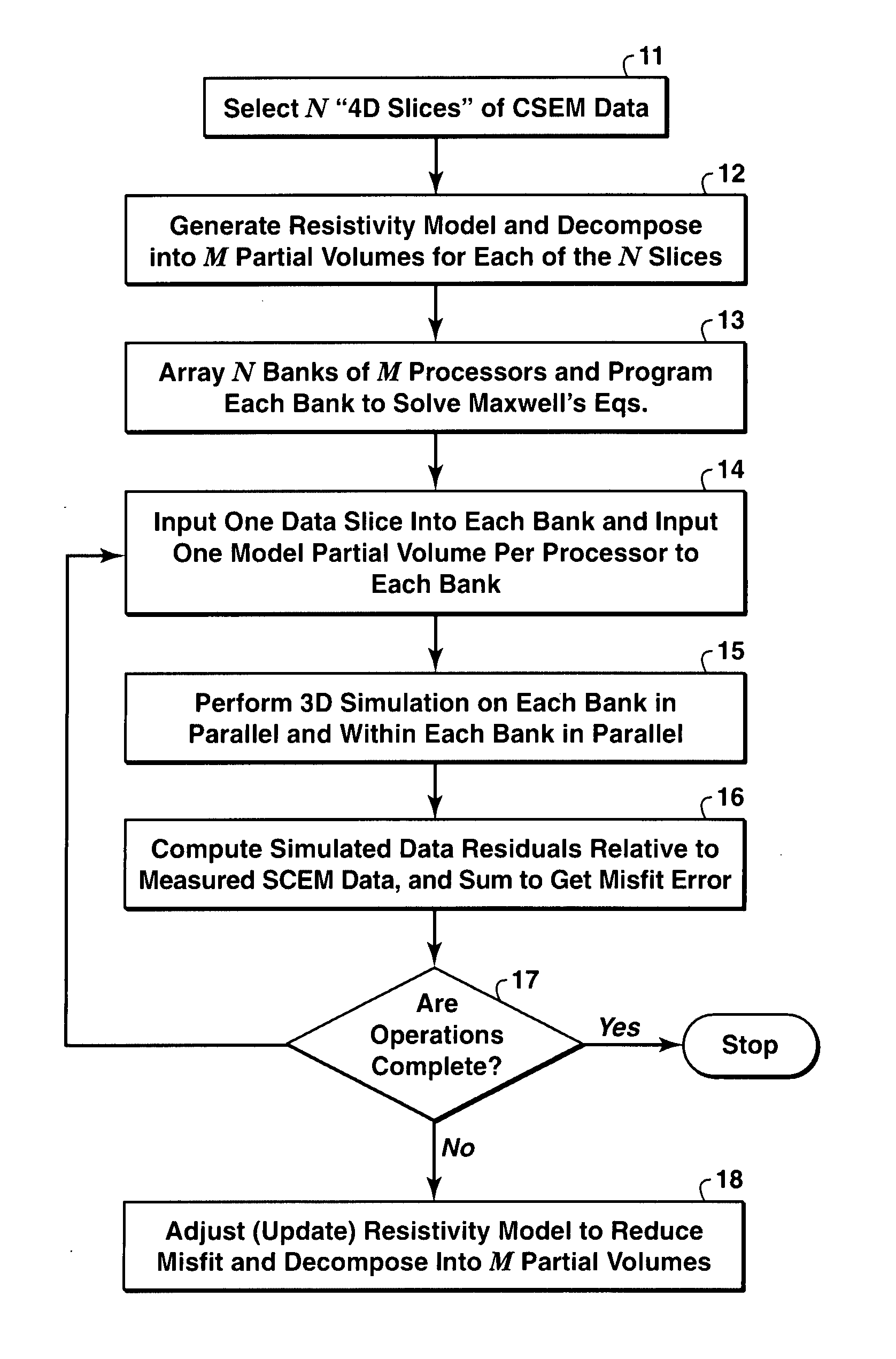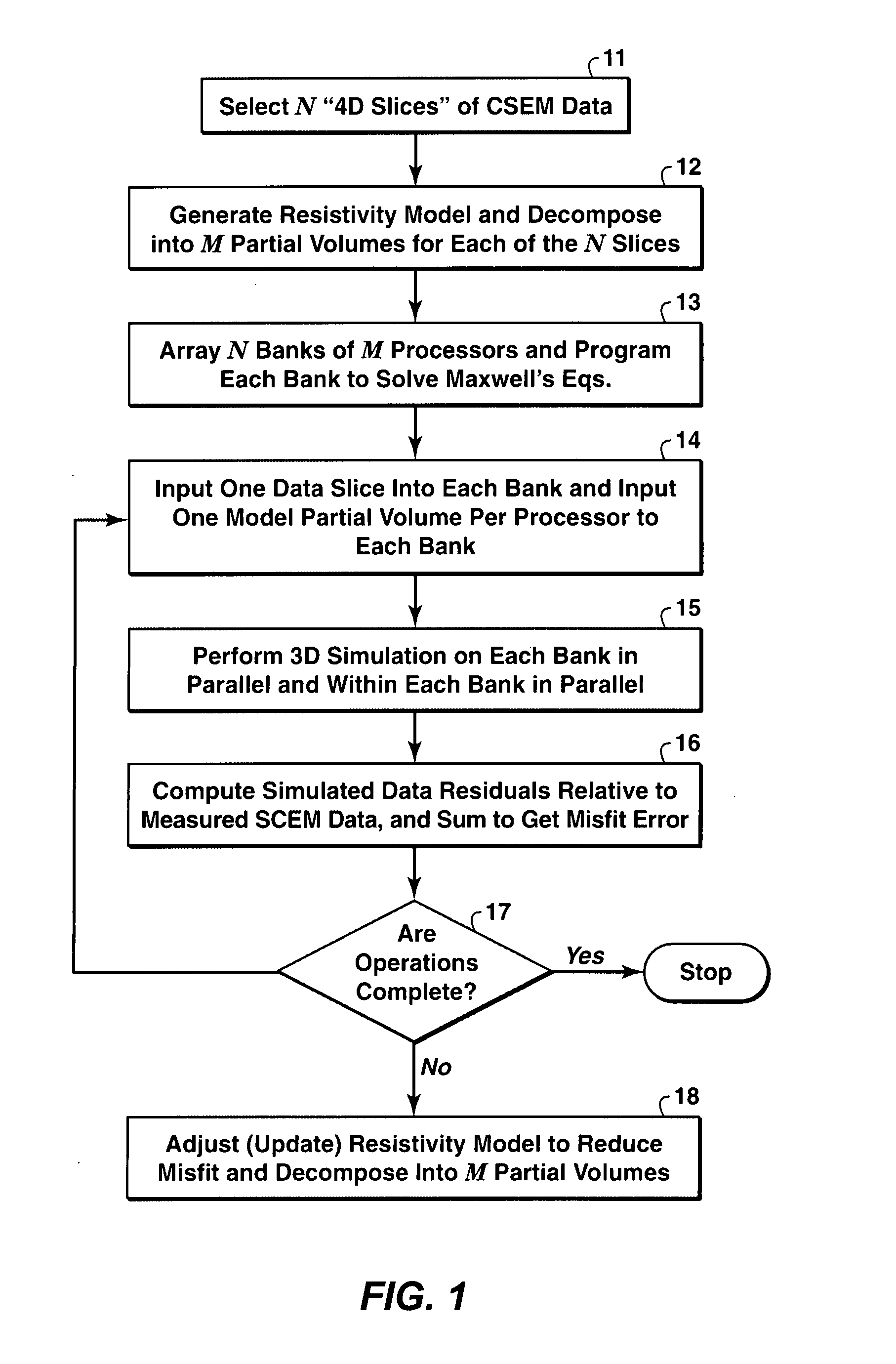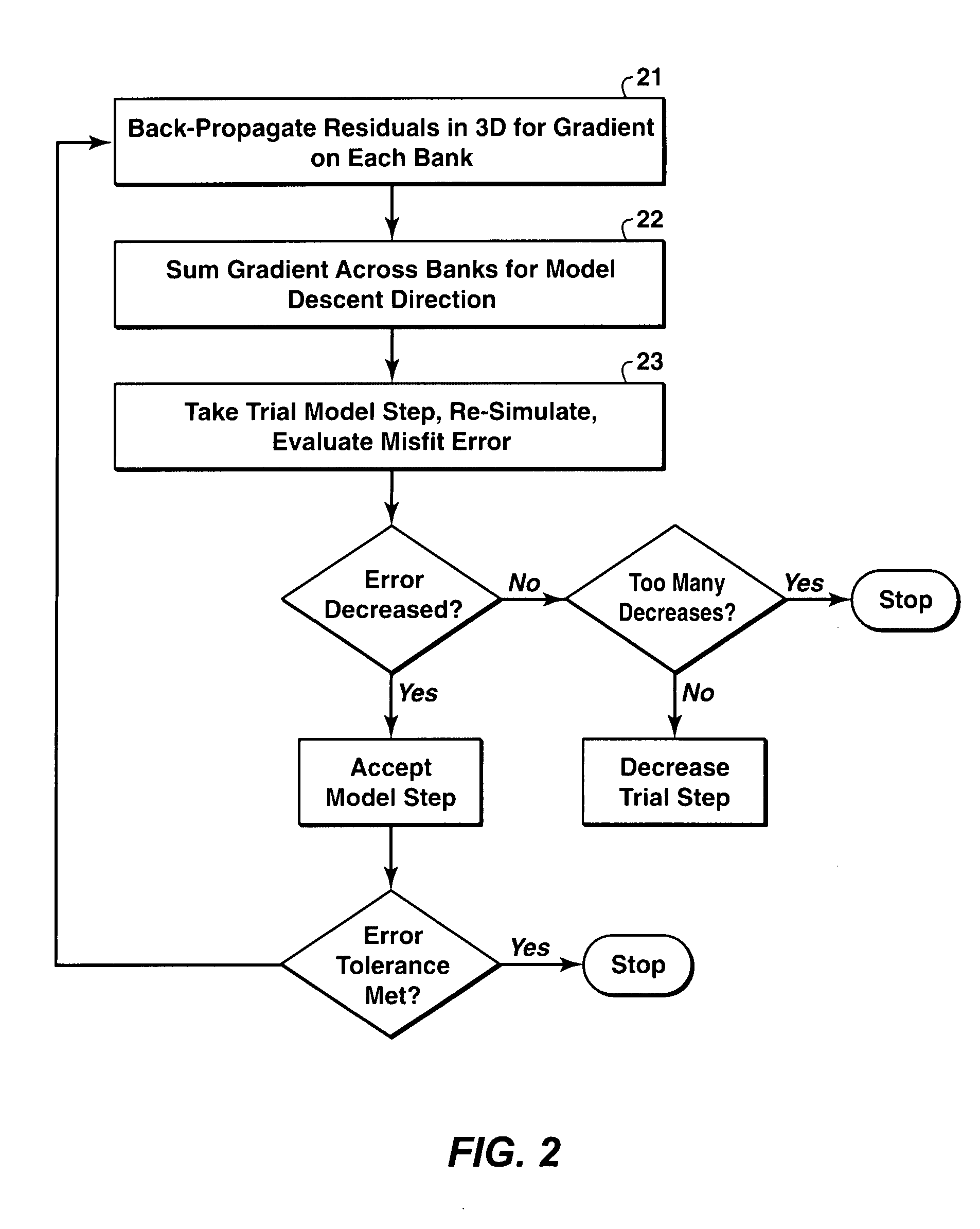1. Deepwater exploration wells are extremely expensive (10 to 30 million USD), making additional subsurface information concerning the presence (or absence) of commercially exploitable hydrocarbons of great commercial value.
4. The air to water interface, being an interface between the non-conductive air (
conductivity ˜10−10 S / m) and relatively conductive
seawater, acts to reflect electromagnetic energy radiated upward by the transmitting generator back downward towards the targets of interest, effectively doubling the
transmitter efficiency.To be of practical value in
hydrocarbon exploration relatively inexpensive measurements made at the surface or
ocean bottom must usefully constrain subsurface resistivity features in a manner that assists in reducing exploration risk. This is an inverse problem in which the electromagnetic data are used to determine valuable aspects of the subsurface resistivities in a process typically called data inversion. In general one or both of the following two procedures are used.1. Human guided, by-hand adjustment of the 3D resistivity model is used until a sufficiently good match is obtained between relevant aspects of measured and synthesized electromagnetic data. This process usually begins with a relatively sophisticated subsurface model based upon an interpretation made with conventional seismic data together with an
hypothesis for converting seismic attributes, such as amplitude, to predictions of resistivity. Obviously this procedure benefits from actual well measurements of resistivity which can be usefully extrapolated into the area of interest. This approach also relies upon the ability to simulate solutions of Maxwell's equations in realistic situations. The term simulate in this context—sometimes called forward modeling—means to solve Maxwell's equations by numerical methods for one or more
electromagnetic field components, using assumed resistivity values as a function of position throughout the
region of interest (the resistivity model). (Analytical solutions exist for Maxwell's equations only for the simplest resistivity models.) Realistic situations will typically present 3D geometry, likely including variations in water bottom
topography and resistivity. Since MCSEM data are typically collected with generating transmitters located about 50 m above the water bottom, and with detectors located on the water bottom,
sea bottom changes in resistivity can have significant effects upon the actual measured electromagnetic fields.2. Inversion procedures that can be
fully automated in which an appropriate mathematical measure of the misfit difference between measured and processed actual CSEM data is reduced by a numerical optimization procedure that adjusts subsurface resistivities (or equivalently conductivities) and possibly other important parameters (such as applied current magnitudes or phase) until the misfit difference is reduced to a sufficiently small value (relative to the expected
noise level in the measured and processed data and relative to the expected
noise level expected in the
simulated data as well). It should be noted that all actual 3D CSEM datasets are insufficient to uniquely determine subsurface resistivities in a strict mathematical sense even on reasonable distance scales in portions of the subsurface that are well illuminated by the transmitting generators. In all cases, inverted resistivity models represent a few of the many possible realizations of actual resistivity distributions in the real earth. These inverted models produce simulations that resemble to a greater or lesser extent the measured and processed data. Thus, non-uniqueness and the need for expert interpretation remain significant issues. However, inversion studies of CSEM data can clearly reduce real world
hydrocarbon exploration risks, particularly when combined with other forms of geophysical data. Inversion procedures applied to Maxwell's equations require cycles of
simulation and back propagation amounting to hundreds of re-simulations of the measured and processed data. Back propagation refers to a mathematical procedure which produces a computationally efficient means of computing the derivatives of the inversion misfit error with respect to the model resistivities or conductivities. Derivative information of this kind is used by the automatic optimization process to reduce the misfit error.
 Login to View More
Login to View More  Login to View More
Login to View More 


